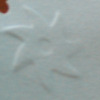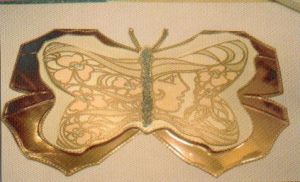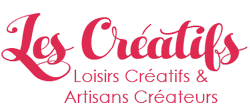 The embossing technique
The embossing technique 
Alsoknown as embossing, this technique creates raised areas on paper.
 Embossingon fine, fibrous paper |
 Embossingon card stock |
The embossing technique consists of pushing the paper along a template. Embossing is always carried out in reverse.
| Essentialtool: an embossing pencil. Double-ended, with the thinner end used for outlining. |
 |
Thepatterns to be embossed will of course depend on the theme of the scrapbook page (snowflakes for photos of skis, little bubbles for photos of swimming pools...) or of the card.
|
Infact, embossing lends itself well to the creation of greeting cards and announcements, because the smaller the surface area, the more remarkable the effect. |  |
Bookatrix embossingstencilsfrom Keepsake card craft
 | These stencils in various shapes can be used to create 3D effects for cards, invitations and scrapbook pages. |
Use a 6mm ballpoint pen, designed not to tear your paper.



